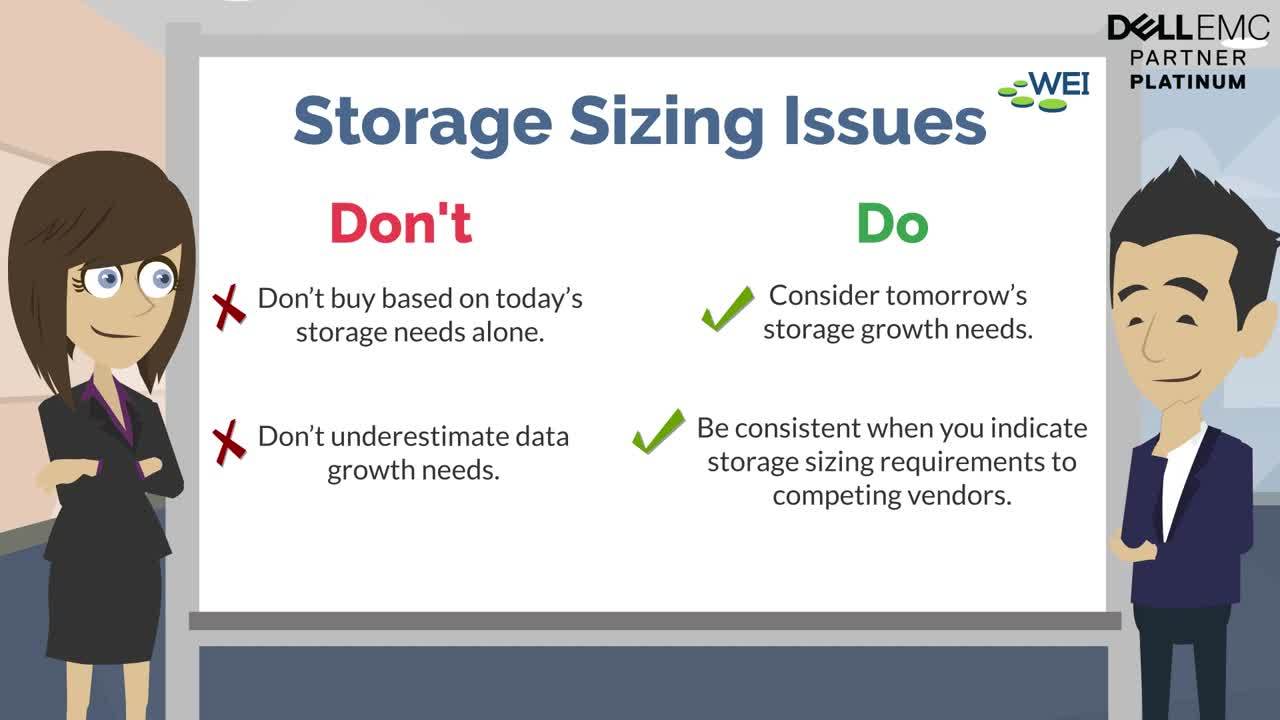 Some purchases require more planning than others do. This is certainly true when it comes to investing in a data storage solution. While applications may come and go, your company’s data lives on. Your data drives the majority of your business operations. One can argue that outside of your Internet gateway, no other facet of the data center has a greater impact on business operations and workloads. As a result, your storage infrastructure serves as a functional foundation for your business and choosing a data infrastructure solution requires greater diligence than other enterprise components. Just as there are best practices to implementing a data storage solution, there are best practices when it comes to purchasing one as well. We’ve compiled a few dos and don’ts concerning the enterprise storage purchasing process.
Some purchases require more planning than others do. This is certainly true when it comes to investing in a data storage solution. While applications may come and go, your company’s data lives on. Your data drives the majority of your business operations. One can argue that outside of your Internet gateway, no other facet of the data center has a greater impact on business operations and workloads. As a result, your storage infrastructure serves as a functional foundation for your business and choosing a data infrastructure solution requires greater diligence than other enterprise components. Just as there are best practices to implementing a data storage solution, there are best practices when it comes to purchasing one as well. We’ve compiled a few dos and don’ts concerning the enterprise storage purchasing process.
Free Download: Learn about aligning flash storage with your IT needs!
Do buy for tomorrow and not today
There are some things you buy to fill an immediate need. Data storage is not one of them. Just as smart homebuyers purchase a first home that will accommodate the needs of a growing family, data storage is a long-term acquisition. You are buying into the future. A recent study by IDC shows that the amount of data residing in the world today doubles every two years. Though that dramatic growth rate may not be indicative of your own environment, it is a universal truth that your organization will create and ingest more data a year from now. Failure to overlook future data growth has definite repercussions. The purchasing process is too elongated and migrations can be too involved and costly to repeat it all again in a couple of years.
Don’t underestimate data growth
If you are going to buy for tomorrow, you need to know what tomorrow looks like. Most of your company’s data is created outside of the IT department. Make it a point to meet with department heads throughout your company to learn about their needs. Their anticipated application deployments will increase data expansion. Meet with senior executives to discuss possible acquisitions or mergers as events such as these can exponentially escalate storage needs overnight.
Do think about your storage environment as a whole
Your data center is a collective assembly of infrastructure nodes and technologies. You cannot optimize server workloads by only considering RAM and CPU allotment. The same applies to storage. Your storage arrays are not islands. Your storage array may have the fastest IOPs but its surrounding infrastructure environment can undermine its performance potential. Make sure you have the right networking strategy to take advantage of high performance storage across your entire enterprise.
Don’t just compare storage size
While careful consideration of future data growth is an essential step, storage availability goes beyond the mere presence of physical storage space. Modern day storage solutions incorporate a number of data reduction technologies to maximize available space such as thin provisioning, compression and deduplication. Make sure you understand these supplemental technologies and understand that different vendors use different equation sets to arrive at their incremental savings targets. Data reduction methodologies can also reduce your overall storage footprint. Storage consolidation equates to lower costs concerning space, power and cooling.
Do compare apples to apples
Data storage is a lot more complicated than it was a decade ago. Make sure you understand the difference between HDD and SSD technology. HDD is cheaper but requires more power to spin the disks. Solid-state drives are much faster and have less moving parts; however, not all of your data will justify the initial cost. There is also hybrid storage that incorporates both types. Make sure you understand the ratio of HHD and SSD and the role that SSD will play.
Don’t let initial pricing restrict your options
We all know that price should never be the sole driving factor for something as important as your storage infrastructure, yet it is an easy trap due to the high cost of storage. CAPEX however, is not the only involved cost for today’s modern data storage solutions. You consider long term operational and support costs as well. Savings initiated from data reduction technologies, drive consolidation and management efficiencies all help to reduce the TCO of modern storage solutions. Some vendors also offer leasing options as well as flex capacity options in which you only pay for the storage you currently use.
Bonus Tech Brief: 3 Cautions for using Flash Storage in the Data Center
Do plan for long purchasing and education cycles
If you have not kept track of data storage innovation since your last purchase, there is going to be a learning curve to catch up. Common best practices within the data storage industry have changed a lot in the past five years. Chances are that any assumptions made during your last product cycle are outdated today. It is about more than just file or block storage today. Begin the preliminary stages of your next product cycle early enough to educate yourself. Taking the time to speak with your peers about their own experiences will pay off. You can also speak with the storage experts at WEI who will take the time to understand the future needs of your environment to help construct a strategy for you.
Do consider Dell Storage Solutions and WEI
There are many options available today when it comes to storage, and you need a vendor that provides many types of solutions. The portfolio of storage solutions available from Dell Technologies can help you unlock the value of your data. Dell offers storage solutions for nearly every conceivable environment:
- Primary storage solutions designed to accelerate your critical workloads from core to edge to cloud
- Managed control of your unstructured data by efficiently consolidating wide ranges of file and object storage at any scale
- Automated management and AI help attain greater efficiencies, performance and reliability
- Data solutions specifically designed for specific environments such as SAP or cloud services
- Data solutions that meet the unique needs of given industries such as healthcare or multimedia
Dell manufactures the solutions, and WEI customizes them to the varying needs of our customers. WEI is a premier technology partner that is also passionate about storage and solving technology problems for our customers. Let WEI educate you about your storage options in order to liberate the value and innovation that lies within your residing data.
NEXT STEPS: Explore more Dos and Don'ts of Enterprise Storage decisions.
Over the years WEI's storage experts have seen it ALL! Find out what we've learned about storage strategies across a variety of industries and check out these helpful tips for planning your enterprise storage needs. Contact us any time for a storage strategy review.











